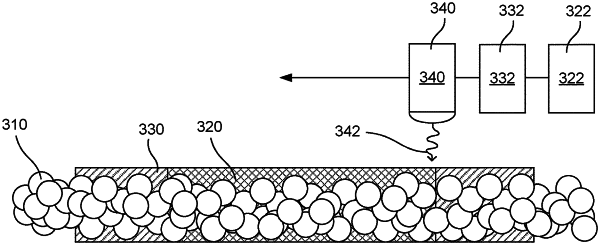| CPC B29C 64/165 (2017.08) [B29C 64/188 (2017.08); B29C 64/264 (2017.08); B29C 64/295 (2017.08); B29C 64/30 (2017.08); B29K 2995/0012 (2013.01); B33Y 10/00 (2014.12); B33Y 30/00 (2014.12); B33Y 40/20 (2020.01); B33Y 70/10 (2020.01)] | 10 Claims |

|
1. A method comprising:
iteratively applying individual build material layers of polymer particles to a powder bed;
based on a three-dimensional object model, selectively jetting a fusing agent onto the individual build material layers, wherein the fusing agent comprises water, a radiation absorber, and triethylene glycol in an amount from about 20 wt % to about 35 wt %, and wherein the radiation absorber absorbs radiation energy and converts the radiation energy to heat;
exposing the powder bed to radiation energy to selectively fuse the polymer particles in contact with the radiation absorber at the individual build material layers and thereby form a three-dimensional printed article; and
post-curing the three-dimensional printed article at a post-cure temperature from about 160° C. to about 250° C. for a post-cure time from about 2 hours to about 30 hours so as to increase crosslinking of the polymer with the triethylene glycol.
|